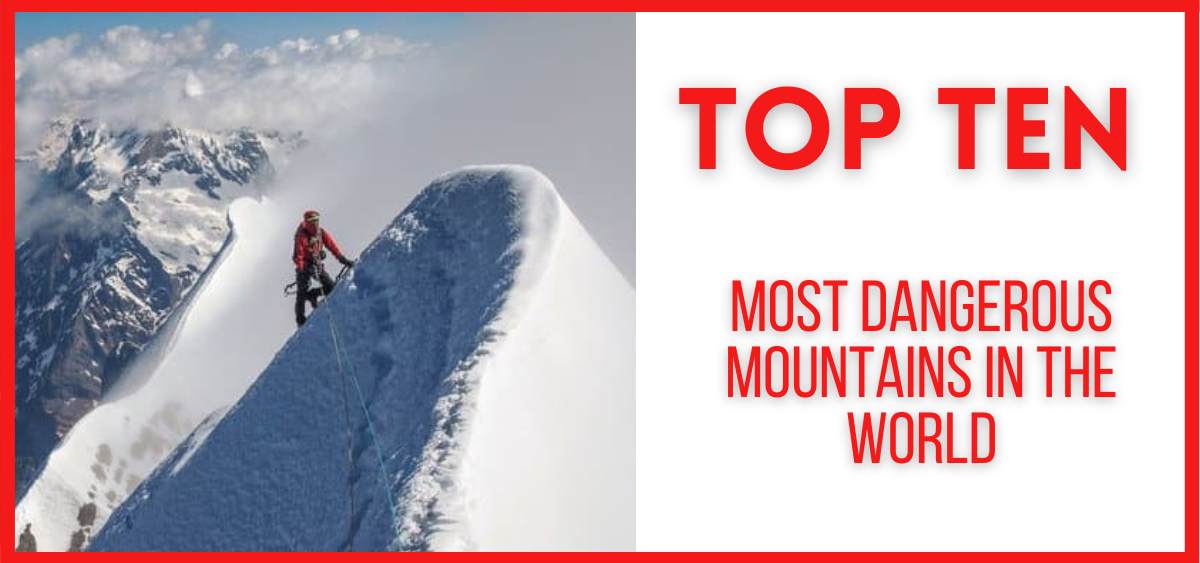You won’t believe it! 10 safe snow-driving hacks Nobody tells you
Driving in snowy conditions can be challenging and even dangerous if you’re not prepared. Whether you’re a seasoned driver or new to snowy roads, it’s important to know the best strategies to stay safe. The first thing to remember when driving in snow is that it requires a different skill set compared to regular road conditions. Slippery surfaces, reduced visibility, and freezing temperatures can all contribute to accidents, but with the right precautions, you can significantly reduce your risk. In this article, we’ll share essential Tips for Driving in Snow to help you navigate winter weather confidently. From maintaining your vehicle to adjusting your driving habits, these tips will provide you with the knowledge to handle icy roads and snowstorms effectively. One of the most crucial Tips for Driving in Snow is ensuring your vehicle is properly equipped, including having winter tires and checking your battery, brakes, and windshield wipers. Additionally, it’s important to drive slower than usual and maintain a safe distance from other vehicles, as stopping distances increase in snow. Other Tips for Driving in Snow involve mastering techniques like gentle braking and steering to avoid skidding. Follow these guidelines to stay safe and arrive at your destination without any accidents this winter season.

1. Be Prepared Before You Go
Before you crank the engine and face the falling snow, a little preventative maintenance can make a world of difference. First, ensure your tires are properly inflated and have sufficient tread depth for snowy conditions. Consider investing in dedicated snow tires for superior traction. Next, check all your fluid levels, including antifreeze, windshield wiper fluid, and engine oil, topping them off as needed. Don’t forget to replace worn wiper blades to ensure clear visibility during the snowfall. Finally, test your lights and make sure they’re clear of any snow or ice buildup. By taking these simple steps and ensuring your car is winter-ready, you’ll be better equipped to handle the challenges of driving in snowy conditions.
Also, read: Top Ten Tips for Driving More Economically
2. Clear Your Windows Completely
Before you hit the road in a snowstorm, visibility is key. Snow and ice buildup on your windows, mirrors, and lights can dramatically limit what you see, turning the car ahead of you or a hidden patch of black ice into invisible hazards. Take the time to thoroughly clean all windows, including the side and rear windows, to check for blind spots. Don’t forget your mirror headlights and taillights. a scraper and brush specifically designed for winter weather will make this job quick and effective. For stubborn ice, a de-icing spray can be your friend, but avoid using hot water, which can crack your windshield. Once clear, keep your defroster on and wipers working to combat any further snow accumulation during your drive. This small investment of time will ensure you see everything you need for a safe journey.
Also, read: Top 10 Most Fuel-Efficient Cars in the World 2024
3. Drive slowly and smoothly
Snow turns even a gentle cruise into a delicate balancing act. Remember, slow and steady wins the race! Maintain a significantly lower speed than you normally would on dry pavement. Forget about quick getaways and sudden stops. Apply the gas pedal gently to avoid spinning your wheels, and brake gradually with a light touch to maintain control. Take turns slowly and smoothly, avoiding jerky movements that could send you fishtailing. Think “finesse” over “force”—a smooth, controlled approach will keep you on the road, while erratic maneuvers are a recipe for disaster. By prioritizing slow and steady movements, you’ll maximize traction and minimize the risk of a skid or loss of control.
Also, read: Top 10 Myths About Electric Cars
4. Increase following distance
Snow may be beautiful, but it wreaks havoc on reaction times and stopping distances. Here’s where the golden rule of following distance comes in: double it! In clear conditions, you should leave enough space between you and the car ahead of you for one to two seconds per 10 mph speed. On snow-covered roads, play it safe and double that distance. This extra cushion gives you precious time to react if the driver in front brakes suddenly, avoids unseen hazards, or skids. Remember, stopping on slick roads takes much longer, so a safe following distance is your best defense against a snowy surprise. Don’t crowd the car ahead of you; think of that extra space as your winter wonderland safety zone.
Also, read: Top 10 Emerging Technologies for Autonomous Cars in 2024
5. Brake Gently
Slamming on the brakes might seem like an instinct when slowing down on snow, but it’s a recipe for disaster. Snow and ice drastically reduce traction, and locking up your wheels can send you skidding into danger. The key is gentle, gradual pressure. Apply the brakes smoothly and progressively, increasing pressure as needed to slow down. This technique allows your anti-lock braking system (ABS) to engage if you have it, preventing wheel lockup and maintaining control of your vehicle. Remember, it takes much longer to stop on snow, so anticipate situations that require braking and start slowing down well in advance. If you don’t have ABS, practice threshold braking in a safe, controlled environment to understand how much pressure you can apply before the wheels lock.
Also, read: Top 10 Advancements in Electric Vehicle Charging Infrastructure in 2024
6. Use low gears
While high gears might seem ideal for maintaining momentum on snow, using low gears can be your friend, especially when starting from a stop or climbing a slippery hill. Lower gears provide increased engine braking, which helps you maintain control by giving the engine more power to “push” the car up the incline without relying solely on the brakes. This can be particularly helpful in preventing your wheels from spinning out if they lose traction on a steep grade. Remember, a gentle touch is key. Ease into the throttle to avoid over-revving the engine and worsening the situation. If you’re unsure about using low gears, consult your car’s manual or a trusted mechanic for specific recommendations for your vehicle.
Also, read: Top 10 Electric Vehicle Technologies
7. Watch Out for Black Ice
Black ice is a sneaky hazard that can turn even a cautious winter drive into a dangerous situation. This nearly invisible layer of ice forms when rain or melting snow refreezes on the road surface, creating a slick patch that blends in perfectly with the asphalt. Bridges, overpasses, shaded areas, and early mornings are prime locations for black ice to form. Be extra vigilant in these areas, and watch for warning signs like patches of road that seem oddly shiny or cars braking unexpectedly. If you hit a black ice patch, stay calm and avoid slamming on the brakes. Take your foot off the gas and steer gently in the direction you want to go until you regain traction. Remember, the best defense against black ice is to drive slowly and be prepared for sudden changes in road conditions.
Also, read: Top 10 Warning Signs Your Electric Vehicle Needs Service
8. Don’t Use Cruise Control
Tempted to set the cruise control and relax on a long winter highway drive? Resist the urge! Cruise control maintains a constant speed by automatically adjusting your acceleration. However, on snow-covered roads, where traction can change dramatically in an instant, this can be a recipe for disaster. If you encounter a sudden patch of black ice or need to slow down quickly for an unseen hazard, cruise control will delay your reaction time by maintaining your speed. Take control behind the wheel in snowy conditions. Manually adjust your speed to match the ever-changing road conditions for a smoother, safer drive.
Also, read: Top 10 Tips for Extending Your Electric Vehicle’s Battery Life
9. Know How to Handle a Skid
Even the most cautious driver can encounter a skid on snowy roads. Here’s what to do: Stay calm and avoid slamming on the brakes, which can worsen the skid. Take your foot off the accelerator and gently steer in the direction you want your car to go. So, if the rear of your car is sliding right, turn the wheel right. This will help your car regain traction and straighten out. Don’t fight the skid with jerky movements, and ease back onto the accelerator once you’re back in control. Remember, a smooth approach is key to recovering from a skid safely.
Also, read: Top 10 Myths About Electric Vehicle Maintenance Busted
10. Pack an Emergency Kit
While avoiding a snowstorm altogether is the ultimate winter driving tip, sometimes the roads must be braved. In case you get stranded or your journey takes longer than expected, packing an emergency kit is crucial. Include a blanket and warm clothes to stay insulated, a flashlight and extra batteries for visibility, and a first-aid kit for minor injuries. Don’t forget a shovel to dig out your tires if needed, a cellphone charger to stay connected, and high-calorie snacks and bottled water to keep yourself fueled. Remember, a little preparation can make a big difference if you encounter unexpected delays on your snowy adventure.
Also, read: Ten Signs That Your Car’s Battery is Dying
How Do You Prepare Your Car for Winter Driving?
When getting ready for winter driving, it’s best to prep your vehicle ahead of time so you can drive safely. This means completing your vehicle maintenance before you head out. Check out our maintenance and repair pricing tool and Service and Repair Guide to help determine the cost. Among the car preparations to take (Tips for Driving in Snow):
- Pack a winter survival kit
- Install winter tires
- Replace windshield wiper blades
- Fill up windshield wiper fluid and keep an extra gallon in the vehicle
- Check tire pressure and tire tread to avoid blowouts
- Keep the gas tank at least half-full at all times to avoid freezing fuel lines
- Keep your vehicle washed to avoid salt corrosion
FAQs for Top 10 Tips for Driving in Snow
Q. How do you drive best in the snow?
Operate your vehicle slowly and smoothly, including brakes, steering, acceleration, and changing gears. Gently accelerate the vehicle using low revs and shift to a higher gear as quickly as possible. Maintain a greater braking distance between your car and the vehicle in front of you. By following these simple tips for driving in snow, your car will be prepped to conquer winter roads!
Q. What is the best speed to drive in snow?
Did you know? You should reduce your speed by 1/3 on wet roads and by 1/2 or more on snow-packed roads, (i.e., if you would normally be traveling at a speed of 60 mph on dry pavement, then on a wet road you should reduce your speed to 40 mph, and on a snow-packed road you should reduce your speed to 30 mph (Tips for Driving in Snow).
Also, read: Top 10 best-selling cars in the world
Q. Should I bother getting snow tires if I don’t drive in snow that often?
This is a common question, and the answer depends on your circumstances. Snow tires make a big difference in terms of traction and stopping distance on snow and ice. If you live in an area that gets even occasional snowfall, they can be a worthwhile investment. All-season tires may not be sufficient for safe winter driving.
Q. My car has traction control, so I don’t need to worry about slowing down in snow, right?
Traction control is a helpful safety feature, but it’s not a substitute for safe driving practices. It can help prevent your wheels from spinning, but it won’t shorten your stopping distance. Slow down and increase following distances, even if your car has traction control.
Also, read: Top Ten Tips for Driving Safely in Winter Weather
Q. What if I get stuck in the snow? What should I do?
If you get stuck in the snow, the first thing to do is stay calm. Don’t try to spin your wheels, as this will only dig you in deeper. If you have an emergency kit, take out your shovel and try to dig out around your tires. You can also place floor mats or cardboard under your tires for extra traction. If you can’t get yourself free, call for help from a tow truck or roadside assistance.
Q. How can I improve my visibility while driving in snow?
There are a few things you can do to improve your visibility in snowy conditions. First, make sure your headlights and taillights are clear of snow and ice. You can also use windshield wiper fluid with a de-icing additive to help melt ice on your windshield. Keep an extra bottle on hand in case you run out. Finally, if the snow is coming down heavily, you may need to use your low beams instead of your high beams to avoid glare.
Also, read: Top 10 Battery Technologies Transforming Automotive Industry
Q. What’s the best way to stay warm if I get stranded in my car?
If you get stranded in your car, it’s important to stay warm. If you have an emergency kit, bundle up in any warm clothes you have packed. You can also run your car for short periods to use the heater, but be sure to crack a window open slightly to avoid carbon monoxide poisoning. It’s also important to conserve your phone’s battery in case you need to call for help.
Conclusion: The Final Words
In conclusion, following the right tips for driving in snow can significantly improve your safety and confidence behind the wheel during winter conditions. Whether you’re a seasoned driver or new to snowy roads, understanding how to navigate these challenging environments is essential. The tips for driving in snow outlined in this guide—such as reducing your speed, maintaining a safe distance, and using winter tires—are fundamental practices that can help you avoid accidents and stay in control. It’s also crucial to keep your vehicle properly maintained, with attention to things like tire pressure, fluid levels, and brakes. Remember that even with the best tips for driving in snow, staying calm and making clear, calculated decisions is key. In snowy conditions, impatience or quick reactions can lead to mistakes. Always be prepared for unexpected situations, like black ice or sudden snowstorms, by keeping an emergency kit and ensuring your phone is fully charged. With these tips for driving in snow, you’ll be able to handle the winter roads with more ease and less stress. Driving in snow may be intimidating, but with the right knowledge and preparation, it can be safe and manageable. Stay cautious, stay alert, and always prioritize safety.


































